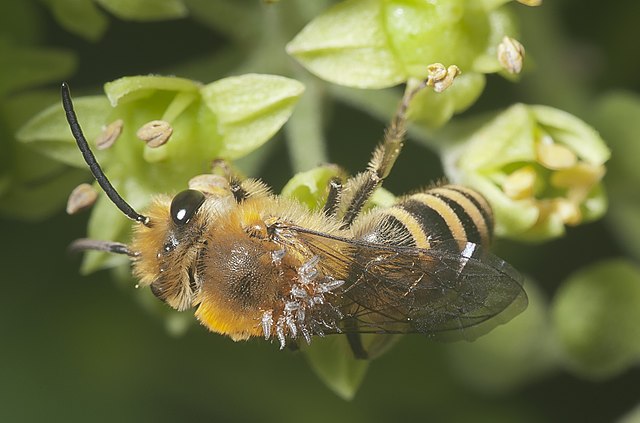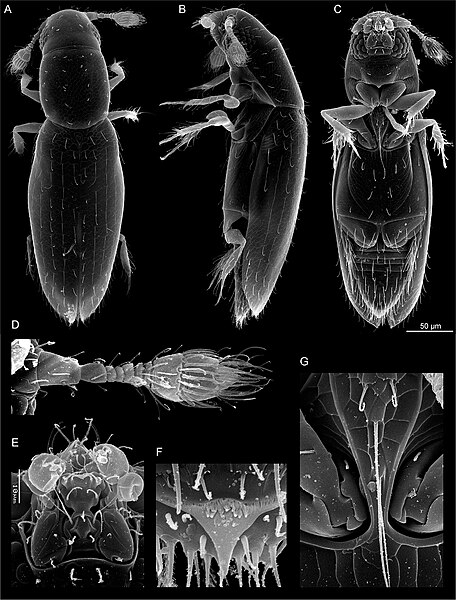Blister beetles are beetles of the family Meloidae, so called for their defensive secretion of a blistering agent, cantharidin. About 7,500 species are known worldwide. Many are conspicuous and some are aposematically colored, announcing their toxicity to would-be predators.
Blister beetle
at Mumbai
Ivy bee (Colletes hederae), carrying parasitic triungulins of Stenoria analis
Black blister beetle, Epicauta pennsylvanica (Meloinae: Epicautini)
Beetles are insects that form the order Coleoptera, in the superorder Holometabola. Their front pair of wings are hardened into wing-cases, elytra, distinguishing them from most other insects. The Coleoptera, with about 400,000 described species, is the largest of all orders, constituting almost 40% of described insects and 25% of all known animal species; new species are discovered frequently, with estimates suggesting that there are between 0.9 and 2.1 million total species. Found in almost every habitat except the sea and the polar regions, they interact with their ecosystems in several ways: beetles often feed on plants and fungi, break down animal and plant debris, and eat other invertebrates. Some species are serious agricultural pests, such as the Colorado potato beetle, while others such as Coccinellidae eat aphids, scale insects, thrips, and other plant-sucking insects that damage crops. Some others also have unique characteristics, such as the common eastern firefly, which uses a light-emitting organ for mating and communication purposes

Coleoptera at the Staatliches Museum für Naturkunde Karlsruhe, Germany
Titan beetle, Titanus giganteus, a tropical longhorn, is one of the largest and heaviest insects in the world.
Scydosella musawasensis, the smallest known beetle: scale bar (right) is 50 μm.
Hercules beetle, Dynastes hercules ecuatorianus, the longest of all beetles.








